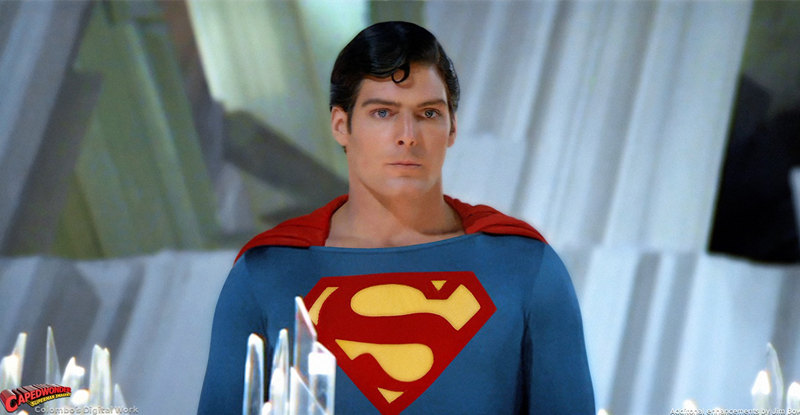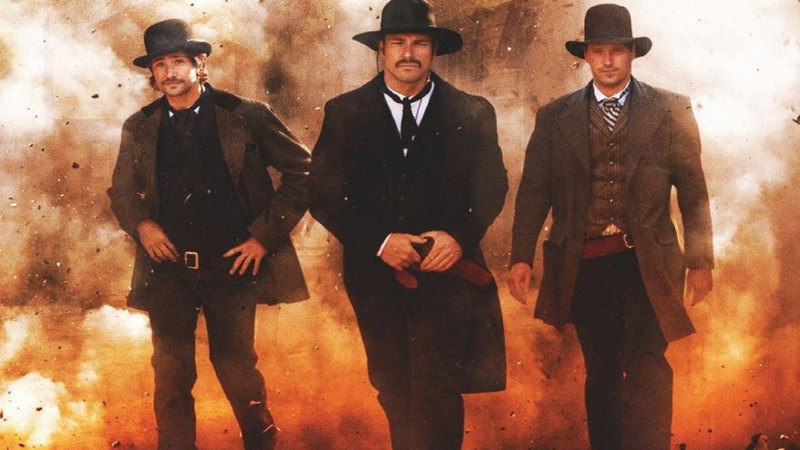When “Cars” (2006) was first announced, I wasn’t terribly optimistic. I thought Pixar’s streak of hits was going to end at six with 2004’s “The Incredibles,” because I had seen Twentieth Century Fox Animation’s “Robots” in 2005 and concluded that it was impossible to create warm-enough metal characters to make viewers get emotionally involved with them—to empathize with them, and, to some small degree, identify with them.
But Pixar found a way.
Led by the chief himself—John Lasseter, who co-wrote the screenplay and directed this pet project— Pixar animators managed to create a fully realized world that was full of charm, humor, and the kind of characters that could really “drive” an integrated marketing campaign. In fact, “Cars” brand merchandise set a new record for Disney-Pixar films, generating an estimated $10 billion in the first five years following the film’s release.
“Cars” begins in a surprisingly generic way, with a big race (the stuff of Saturday morning cartoons) ending in a three-way tie between two veterans and a cocky rookie named Lightning McQueen—the winner to be determined by a tiebreaker that will be held in California a week later.
McQueen (Owen Wilson) is totally self-absorbed, so it’s no shock that he pushes his personal big rig, Mack, to get him there overnight . . . and it’s no surprise that the audience is instantly delighted that he gets an early come-uppance when Mack (John Ratzenberger) falls asleep and, startled by a bunch of highway hotwheels, accidentally dumps his dozing cargo in the middle of nowhere.
Make that the one-road town that time forgot: Radiator Springs. There, McQueen is towed off by a buck-toothed tow-truck named Mater (Tow Mater, get it?) and appears in court. Though the judge, Doc Hudson (Paul Newman), is willing to let bygones be bygones, the local attorney wants restitution, and McQueen is sentenced to repave the road. Hard labor, yes, but Radiator Springs is also his salvation.
This detour plays out like an episode of “The Andy Griffith Show,” when a fast-lane, big-city businessman’s car breaks down and he’s “stuck” in Mayberry for the weekend. Though his attitude is one of superiority and disdain, it’s there that he learns to appreciate the little things in life—to slow down and smell those clichéd roses. It’s there, too, that he learns a lesson in humility and discovers that city folk are not superior to country folk after all.
With that familiar human-interest story pushing the narrative and with Pixar animators finding a way to bring the voice talent’s personalities to the visual look of the vehicles, “Cars” begins to take on a life of its own, and you get drawn in. You find yourself wondering, for example, why Doc, who’s revealed to have a secret racing past, decided to put that part of his life behind him, or suddenly wishing that McQueen and Sally (Bonnie Hunt) would get together, or hoping that Mater (Larry the Cable Guy) is rewarded for his unconditional friendship.
Without the Radiator Springs detour and all of the opportunities for character interaction and development that it presents, “Cars” is just another contest or race movie—something we’ve seen a gazillion times over. But by the time McQueen actually gets to that racetrack in California, it becomes a test not just of speed, but a challenge to see if he’s learned anything at all back in Radiator Springs. It’s the story of his own journey from jerk to something approximating a nice guy.
“Cars” is also a nod to the popularity of NASCAR and an homage to America’s highway, Route 66—with numerous roadside attractions alluded to. “Cars” is the last film made totally by Pixar and with 100 percent Pixar control, so it was no doubt important to Lasseter and his animators to make this movie and make it right, before they were acquired by Disney. Now, “Cars” is still fabulous to look at, with dazzling animation and backgrounds, and with art design and set decoration that make each frame a kind of impromptu game of “I Spy.” There’s always something new to see, no matter how many times you watch “Cars.”
Video:
You could see by the 2D Blu-ray released in 2007 that this film was just begging to be rereleased in 3D. There were plenty of eye-popping moments, and those moments are enhanced by 3D . . . but not as much as you might have guessed. As with so many 2D films converted to 3D, the 3-dimensionality shows up mostly within the depth of the TV, rather than breaking the plane with objects and action that appear to come right into your family or living room. Colors are just as bright as on the 2D Blu-ray, and the detail holds even during fast and furious action.
In truth, though, with the 3D improving depth but not radically altering the overall effect of the film, it might not be enough for glasses-haters to keep donning the specs. The 2D Blu-ray looks so glorious on its own that I suspect 3D will be a novelty watch for some people and the default will be the standard Blu-ray. EVERYTHING pops, no matter what format you choose. It’s a fantastic looking film in HD.
“Cars” is presented in the original 2.39:1 aspect ratio, and I saw no significant banding as a result of the AVC/MPEG-4 transfer.
Audio:
Disney has gone with an English Dolby TrueHD 5.1 on recent titles and they go for it again on this disc. It’s a truly immersive experience, with sound almost continuously moving across the sound field—most effectively during the race scenes, which make you feel as if you’re right there with the pit crew as cars zoom around you. It’s pretty darned impressive, and the LFE channel flat-out rocks.
I did have to toggle up and down on the volume control a few times, but not often enough to complain about. Dialogue is actually nicely prioritized, and the effects are well balanced and mixed. Additional audio options are an English 2.0 DVS, and French and Spanish Dolby Digital 5.1 Surround; subtitles are in English SDH, French and Spanish.
Extras:
This is a three-disc combo pack with 3D Blu-ray, Blu-ray (apparently the same disc as on the 2007 release), and DVD, plus Digital Copy.
You can access roughly 48 minutes of bonus features via the menu screen or else you can watch the film in Cine-Explore mode, if you’re into those “interactive” pop-ups that you click on as they seem appropriate to the programmer. The features, which average five minutes each, cover the creation of Radiator Springs, Character Design, Animation and Acting, Real World Racing: Getting Geeky with the Details, Hudson Hornet, Graphics, a Darrel Waltrip Museum Tour, an Epilogue that plays next to the end credits that you can also watch separately, a “Movie Showcase” of four scenes that you’re supposed to use to “show off” the HD system (why not just play the movie??), and “Boundin’ Cars,” a minute-long auto variation on a Pixar short film. It appears to be the same Cine-Explore as on the initial Blu-ray release, so you can select or deselect art to pop up, and you can toggle back and forth between a director’s commentary and a production commentary that I personally found superior because it’s a nostalgic trip down old Route 66. Lasseter and pop-up artwork is the default if you choose “automatic” transmission on this journey; with “manual” you can choose your own adventure.
Then there’s “Carfinder,” a search game in which you use your Blu-ray remote to find designated cars during the film (by getting a car in your crosshairs and clicking on it). I can just see the kids adding a “punch” aspect to this game. They might need to, because I think it’s more distracting than it is a fun enhancement of any sort.
The remaining bonus features: Deleted scenes (four rough ones, roughly two-and-a-half minutes each), a 16-minute interview with John Lasseter talking about the film’s genesis and influences, a “One Man Band” short film, and a second short film, “Mater and the Ghostlight.”
Bottom line:
“Cars” has energy and heart—two things that “Robots” lacked. Whether you watch in 3D or 2D Blu-ray it’s a rich and rewarding experience.


